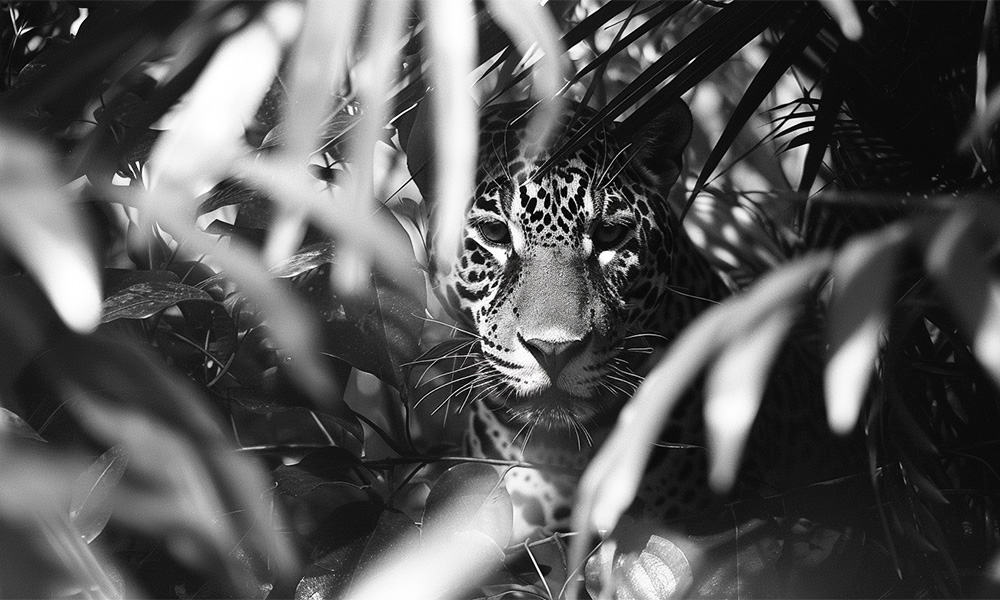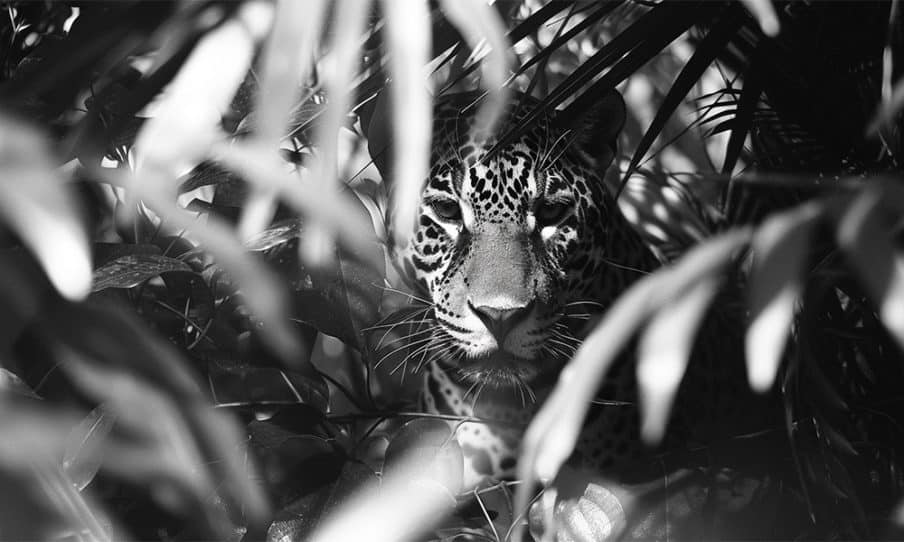
Deep in Costa Rica’s dense rainforests roams one of the most majestic yet endangered creatures on Earth – the jaguar. These big cats once freely prowled across much of South and Central America, but loss of habitat and hunting by humans have made Costa Rican jaguars a rare sight even in their own land.
Yet pockets of these solitary predators still hold on in the country’s few protected wilderness areas, representing this iconic species’ last stand in Central America.
Jaguars have an ancient connection to Costa Rica, having evolved here over millions of years. In fact, the name “jaguar” originated from the indigenous word yaguar, meaning “he who kills with one leap.” That name perfectly describes what makes jaguars such effective hunters – their stocky but agile frame, allows them to spring on prey with a pounce powerful enough to pierce through turtle shells.
Standing over 3 feet tall and stretching 7 feet long (including their tail), jaguars are Central America’s largest cat species. Their distinctive spotted coats provide perfect jungle camouflage while also making each individual’s rosette patterns as unique as a human fingerprint.
Living mainly solitary lives, they patrol rainforest territories up to 15 square miles in size while tracking prey that includes peccaries, monkeys, tapirs, sloths, caiman and more.
Jaguars once freely inhabited tropical and subtropical forests from Mexico to Argentina, making them the widest-ranging large wild cat in the Americas.
But habitat destruction and fragmentation have made the species extinct in many parts of its historical range, including Costa Rica’s Northwestern province of Guanacaste. Other factors threatening Costa Rican jaguars are persecution by cattle ranchers blaming them for livestock kills and illegal hunting for their beautiful hides.
The largest population of Costa Rican jaguars survives within protected areas like Corcovado National Park on the remote Osa Peninsula. At over 165 square miles, Corcovado contains the country’s largest expanse of intact lowland Pacific rainforest, perfect jaguar habitat. Researchers estimate around 125-180 jaguars may still live in Corcovado along with healthy populations of their prey animals like peccaries.
The park’s limited access and watchful park rangers provide vital protections for jaguars. Still, poaching and conflicts with cattle ranches around park boundaries remain persistent threats.
Other prime Costa Rican jaguar habitats are the high-altitude cloud forests of the Talamanca Mountains, including Chirripo National Park and La Amistad International Park. The cooler mountain forests offer a smorgasbord of small prey like rodents and frogs that supplement the larger deer and peccaries that jaguars feed on.
Protecting vital corridor habitats between individual parks is also crucial for maintaining genetic connections between different jaguar populations according to biologist Eduardo Carrillo Jiménez, Costa Rica’s leading jaguar expert.
Catching sight of a wild Costa Rican jaguar remains an extremely rare event due to their wariness of humans and skills at avoiding detection. Yet visitors to Corcovado National Park occasionally glimpse one of these spectacular cats if they’re very lucky.
For most people, the only chance to see Costa Rica’s elusive jungle phantom is through remote camera trap images or paw print tracks on jungle trails. Such fleeting signs serve as tantalizing reminders that at least a few jaguars still prowl Costa Rica’s shrinking wildernesses.
While cattle depredation and other conflicts hamper public support for jaguar conservation in Costa Rica, ecotourism offers hope for changing attitudes. Corcovado and other parks with healthy jaguar populations draw visitors from around the world hoping for a cat sighting.
Ecolodges catering to this high-end market also donate profits toward protecting jaguar habitats. Such economic incentives gave communities around the small Caño Negro Wildlife Refuge reason to proudly call themselves “the protectors of the jaguar.”
As human pressures keep mounting against Costa Rica’s remaining wild lands, the fate of the jaguar remains on the knife edge. But active conservation efforts offer some reason for hope.
The genetics of the country’s isolated jaguar populations are actively studied to guide efforts at improving connectivity. Illegal cattle ranching and poaching inside parks are better controlled thanks to programs hiring more park rangers from indigenous communities. And the tourism appeal of jaguars gives communities economic incentives to become partners in conservation.
While threats and challenges remain, visionary conservation programs aim to bend the arc toward a future where thriving wildlife symbolized by the iconic jaguar still has a place in Costa Rica’s forests.
The health of those forests and the jaguars remaining in them serve as a barometer measuring the success of whether humans and wildlife can continue coexisting in Costa Rica. If a balance can be maintained, then the spirit of the jaguar will continue gracing Costa Rica’s green jewels for centuries to come.

